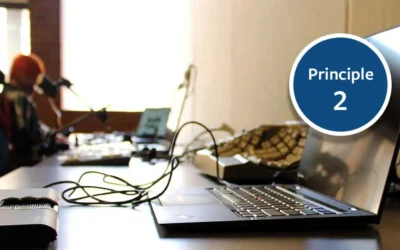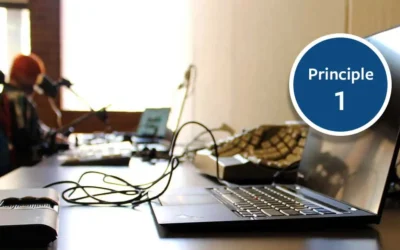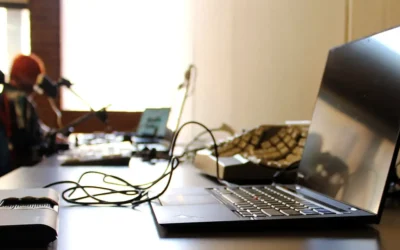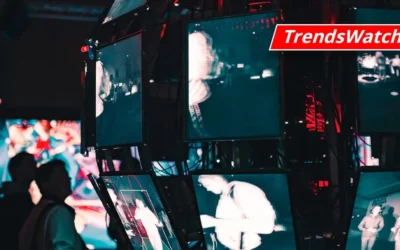Museum TrendsWatch 2020: Fostering Financial Sustainability

Rachael Cristine Woody
This is the final installment in my series on the American Alliance of Museums’ TrendsWatch 2020: Financial Sustainability. This post will summarize the conclusion of the TrendsWatch 2020 report and offer insight into what comes next.
Summary
AAM concludes its 2020 report with acknowledging that there’s no “one size fits all” model when it comes to building financial sustainability. With this in mind, AAM offers three steps we can all take toward achieving sustainable finances: paying attention to data, fostering financial literacy, and building a culture of experimentation. This post will explore each and offer examples for how museums may implement each step.
Pay Attention to the Data
In order to make sound financial decisions we need to have data. Data can include hard numbers, staff observations, community conversations, industry research, new technologies, and business strategies. The consistent gathering and analysis of your museum’s data and how it fits into a larger ecosystem (within your community and compared to peer museums) will help you identify trends and make strategic decisions based on predictive models. AAM recommends you gather the following information: attendance data, demographic information from point of sale or surveys, beacon tracking, and social media metrics. For external metrics, the following are suggested: census data, local or regional studies, and national nonprofit data.
Achieve Financial Literacy
For a museum to achieve financial literacy the majority of museum staff must become familiar with the museum’s finances. As AAM accurately points out: how can staff be expected to have ideas and make decisions that lead to financial success if they aren’t familiar with where the museum gets its income and how that income affects museum programming or operational decisions? Providing this financial context is critical for staff to be able to successfully support the museum.
Build a Culture of Experimentation
I believe we’ve all had experience working in a new setting and sharing a new idea sparked by your fresh observations, and then hearing the word: “No”. Usually, it’s followed by a “We’ve tried that before” or “That won’t work because…”. According to AAM, “Staff often have great ideas, but without skillful cultivation, their innovations may be beaten to death by committee before they have a chance to breathe.” In order to help foster a culture of experimentation, AAM recommends the following:
- Establish norms for discussion of new ideas
- Regularly ask “What if?” And “Why not?”
- Set up a formal program or mechanism to capture new ideas
- Value and recognize people for trying new things
Conclusion
In these challenging times it can be hard to move past the predominant feeling of overwhelm. There are a lot of personal and professional challenges ahead for us and it’s going to be difficult. It’s understandable if you find the AAM report to be frustrating or even useless because it focuses on financial strategies that take time to mature—at a time when we’re experiencing a crisis. These next few months will require emergency work as we respond to the crisis and acquire the emergency relief funds available. But immediately after that we must be ready to pivot from operating under emergency to operating toward financial stability. Relief funds won’t be available forever—nor will there likely be enough to adequately assist every museum—and we need to be ready with out of the box thinking and a willingness to test innovative strategies. And you’re going to need all hands on deck to gather information, idea generate, test, and implement. I recommend you start planning for this pivot now as the sooner you can execute it the sooner you’ll be able to achieve financial stability.

Rachael Cristine Woody
Consultant, author, and blogger Rachael Cristine Woody advises on museum strategies, collections management, grant writing and the future of museums for a wide variety of clients.
Read Rachael’s previous posts from Museum TrendsWatch 2020:
- Financial Sustainability Introduction
- Earned Income
- Charitable Income
- Government Income
- Financial Capital
And check out Lucidea’s market leading CMS, Argus, that empowers museum professionals to make their collections more visible, accessible and engaging than ever before.
Similar Posts
Museum Collections Online with Accessibility Principle 2: Operable
Compliance with WCAG Version 2.1 Principle 2: Operable
Museum Collections Online with Accessibility Principle 1: Perceivable
Compliance with WCAG Version 2.1 Principle 1: Perceivable, affecting information published from museum CMS to an online portal; expert guidance
Accessibility Standards for Museum Collections Online
A museum’s compliance with the ADA Title II 2024 update has benefits for its online content and for the museum’s community of users.
Museum TrendsWatch 2024: Digital Twins and Doom Loops & Combatting the Loneliness Crisis
Digital Twins is the construction of a digital surrogate for a person, place, or thing—one of several new concepts and trends in the museum sector.




Leave a Comment
Comments are reviewed and must adhere to our comments policy.
0 Comments